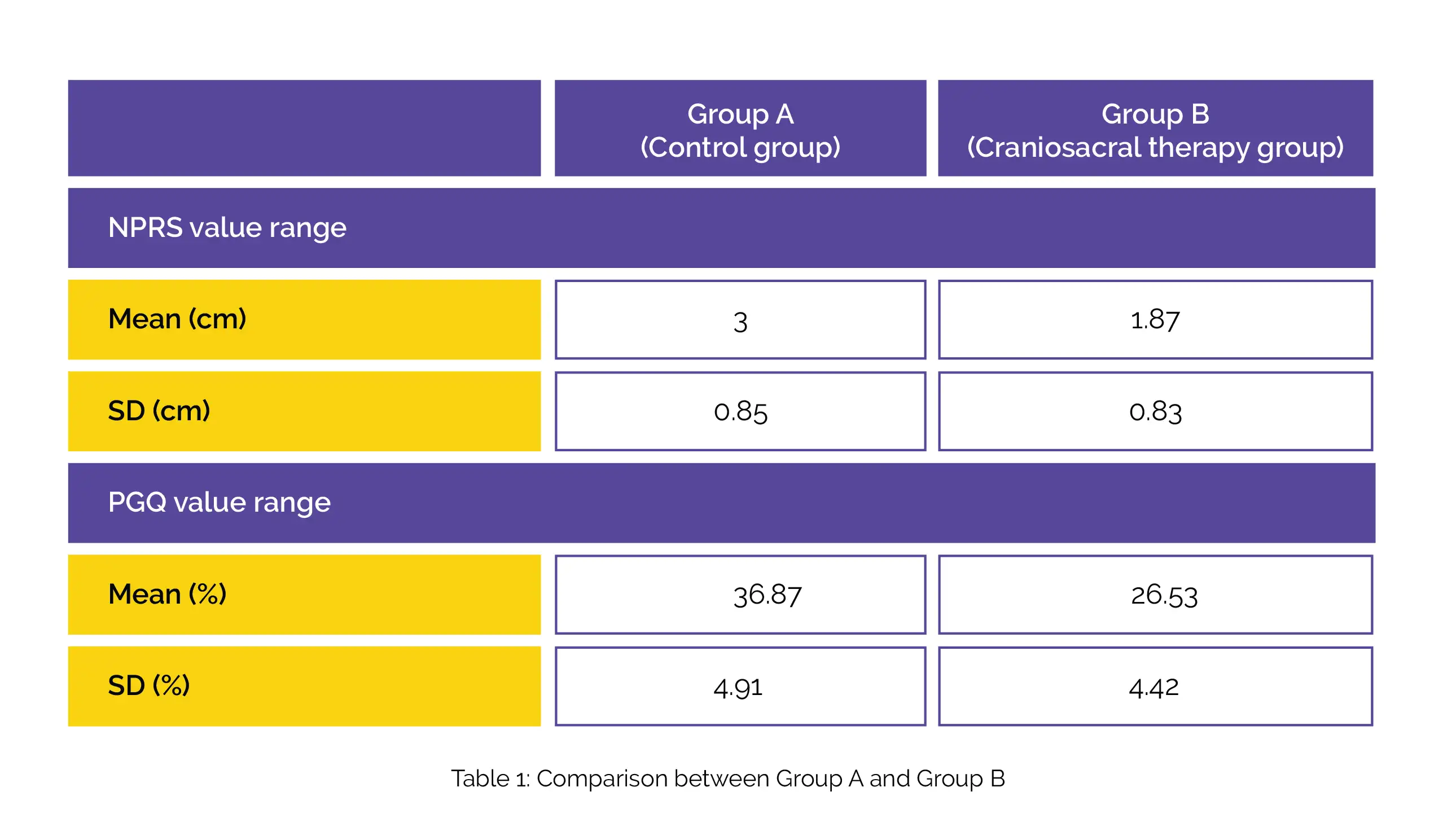Categories
Change Password!
Reset Password!


A quasi-experimental study was conducted for assessing the efficiency of craniosacral therapy to reduce pain and improve daily routine activities in pregnant females suffering from pelvic girdle pain.
In pregnant females with pelvic girdle pain, craniosacral therapy showed superior pain-relieving efficacy when compared to standard therapy.
A quasi-experimental study was conducted for assessing the efficiency of craniosacral therapy to reduce pain and improve daily routine activities in pregnant females suffering from pelvic girdle pain.
With the aid of a convenient sampling technique, a total of 30 pregnant women suffering from pelvic girdle pain were recruited. Participants were segregated into two groups namely the control group (Group A) and the craniosacral therapy treated group (Group B).
Using the Numerical Pain Rating Scale (NPRS) and the pelvic girdle questionnaire (PGQ), recording of the pain intensity and disability values was done and were compared before and after the treatment utilizing mean and standard deviation (SD). The use of paired t-test was done for statistical analysis.
Females receiving craniosacral therapy reported less functional deterioration and decreased pain intensity compared to females receiving standard treatment. The post-treatment NPRS value range and PGQ value range reported in both groups are shown in Table 1.

In comparison with standard therapy, craniosacral therapy is highly efficacious for the management of pelvic girdle pain during pregnancy.
BIOMEDICINE An international journal for Biomedical Sciences
The effectiveness of craniosacral therapy compared to standard treatment for pelvic girdle pain during pregnancy: A quasi experimental study
K. Kotteeswaran et al.
Comments (0)